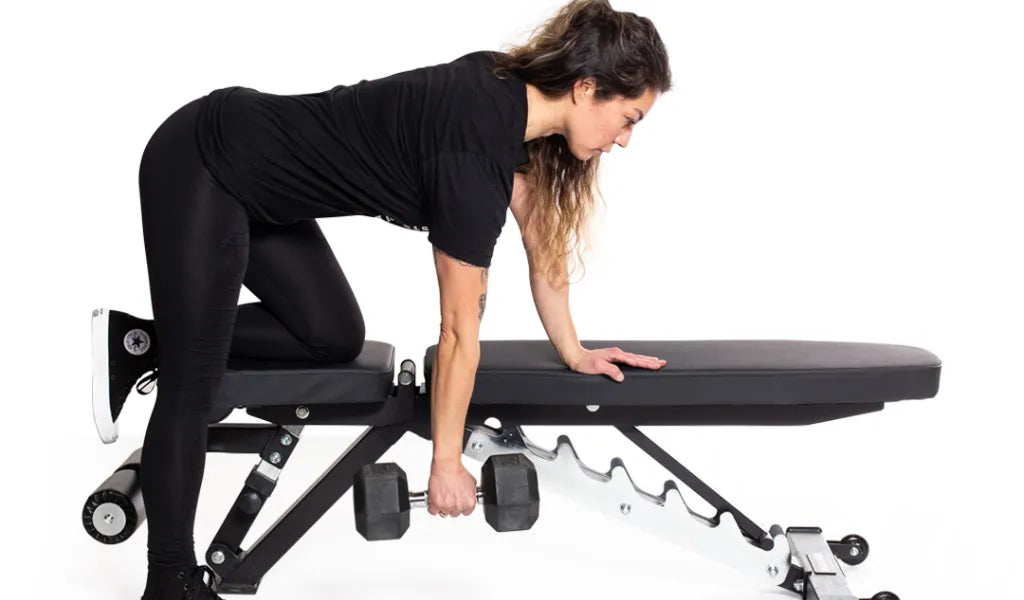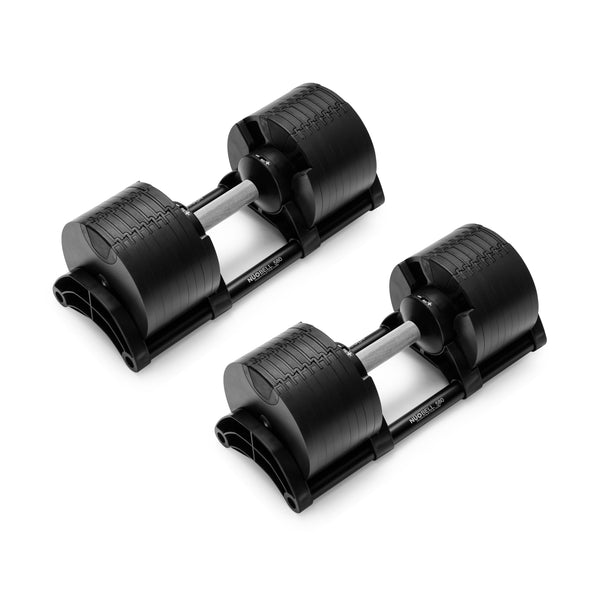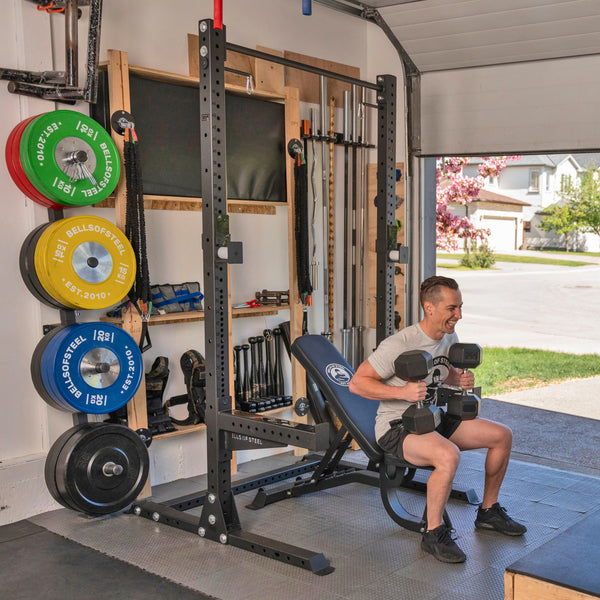Starting a home gym training schedule doesn’t require a PhD in exercise science, a blood-oath to rise at 5 a.m., or any knowledge of your circadian rhythm’s feelings. It just takes consistency, a splash of common sense, and maybe a little heavy metal (music or plates—your call).
Whether you're rocking a power rack in your garage, a couple dumbbells in the spare room, or your living room doubles as a gym between Netflix marathons, getting into a rhythm with your training is the secret sauce. So let’s help you get that home gym schedule off the ground—without pulling a muscle or your hair.
Step 1: Choose a Workout Plan You’ll Actually Do
Don’t start with an elite powerlifting program if you haven’t lifted since high school gym class. Start with a beginner-friendly workout plan that hits all the major movement patterns and gives you enough time to recover and adapt.
Look for:
-
Full-body workouts 2–4x/week
-
Basic lifts: squats, hinges, pushes, pulls, carries
-
Progressive overload: increase reps, sets, or weight over time
-
Optional: mobility and warm-ups so you’re not walking like a baby giraffe after leg day
Programs like starting strength, 5x5, or even a simple push/pull/legs split can work great. Or go ultra-simple: 3 workouts a week with one squat, one press, one pull, and a finisher. Boom.
Of course, we’d love for you to try out our Couch to 500kg Program. But… we just want you to be happy. It’s all we’ve ever wanted. *Cue soaring cinematic romantic music stuff*
Step 2: Set a Realistic Schedule—And Stick to It
Here’s the hot take: the best time to work out is the time you’ll actually do it.
Not 5:00 AM because some influencer with suspiciously veiny biceps said so. Not midnight because a study showed it might spike your testosterone 0.02%. Choose a time that fits your life.
Ask yourself:
- Are you a morning mover or a night owl lifter?
- What’s your work/family schedule like?
- Do you need to avoid kid/dog chaos hours?
- When does your boss go to lunch so you can frolic around your gym while running a macro that makes it look like you’re working? (Just kidding, boss. 😬)
Then block off that time like it’s a meeting with your gains. Because it is.
Step 3: Ease Into It—Don’t Go Full Beast Mode on Day One
You wouldn’t max out your credit card to “start budgeting,” so don’t blow your CNS trying to PR on Day 3. Start slow. Let your muscles, joints, and nervous system adapt.
Week 1–2? Focus on:
-
Learning proper form
-
Establishing your routine
-
Feeling good, not fried
Add intensity and complexity later. Right now, your main job is just showing up. Trust us, that’s half the battle (and three-quarters of the results).
Step 4: Organize Your Gear for Success
An organized gym is a happy gym. If your plates are buried under laundry and your kettlebell is doubling as a doorstop, your motivation’s going to take a nosedive.
Do this:
-
Wall-mount your barbell or use vertical plate storage
-
Keep accessories (bands, handles, clips) in bins or hooks
-
Designate a small warm-up/stretching zone
-
Keep your gear safe and secure, especially if you have little humans or furry friends roaming around
Bonus: Knowing exactly where everything is means faster, more focused workouts. Less time hunting for your collars = more time getting yoked.
Step 5: Track It or Forget It
You don’t need a spreadsheet more complicated than your taxes, but tracking your workouts helps keep you accountable, motivated, and aware of progress (like finally getting past that 95 lb bench block).
Track:
-
Exercises
-
Sets/reps
-
Weight used
-
Notes (like “felt easy” or “almost died”)
Apps, a notebook, or scribbled on your mirror in dry erase—it all works.
FAQs: Home Gym Scheduling Tips
Q: How many days should I work out as a beginner?
A: 3 days a week is golden. You’ll build strength, recover well, and not hate your life. Want more? Add in some active recovery like walking, yoga, or mobility work between lifts.
Q: Is there a best time of day to lift?
A: The “best time” is whenever you can train consistently. If your only free window is 9:07 PM after the kids are down and the dishes are done—go for it. Your muscles won’t care. Promise.
Q: What if I miss a day?
A: No need to punish yourself with burpees or self-loathing. Just pick it back up the next day. Progress isn’t lost in one missed session—it’s lost in quitting entirely. Don’t quit.
Q: How long should my workouts be?
A: For beginners? 30–45 minutes. You don’t need 2-hour marathons. Keep the pace brisk, the rest short-ish, and focus on quality reps over quantity.
Q: What equipment do I really need to start?
A: Bare minimum? A couple dumbbells or kettlebells, a resistance band, and maybe a mat. Bonus: if you’ve got space and budget, grab a power rack, adjustable bench, and barbell set. (The Bells of Steel Hydra makes a strong case for itself.)
Q: How do I stay motivated at home?
A: Set short-term goals, make a killer playlist, wear clothes that make you feel like a superhero, and remind yourself that future-you is already proud.
Also: keep mirrors nearby. Quads like compliments too.
Final Tips for Success
-
Plan your week every Sunday. Knowing your training days = fewer skipped sessions.
-
Stick to the plan, but be flexible. Missed Monday? Bump things over. Life happens.
-
Celebrate small wins: added a rep? Nailed a form cue? Did a workout with zero interruptions from your toddler? That’s a dub.
-
Join a community (even virtually). Sharing PRs, gripes, and gear pics with other home gymmers keeps you plugged in and pumped up. We dig the Home Gym subreddit. We definitely don’t have spies there, weird that you’d even think that.
You Don’t Need Perfect—Just Progress
Building a beginner-friendly home gym schedule doesn’t mean overhauling your life. It just means carving out time for yourself, moving your body with purpose, and creating a routine that fits you. Whether you lift before sunrise, during naptime, or after the house has gone quiet—your schedule should serve your goals, not the other way around.
Consistency is king. But starting small? That’s the throne.




